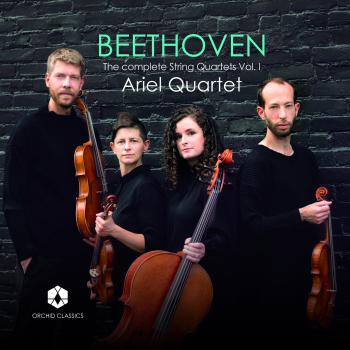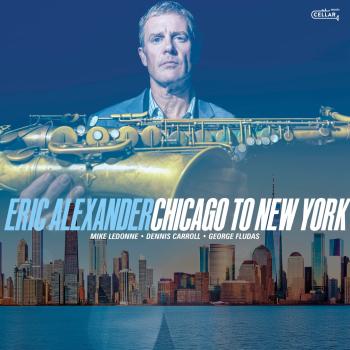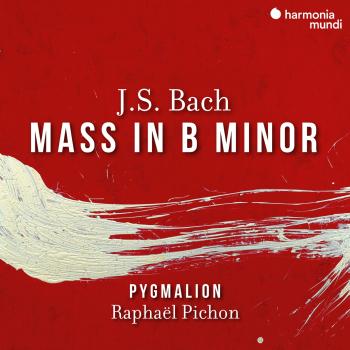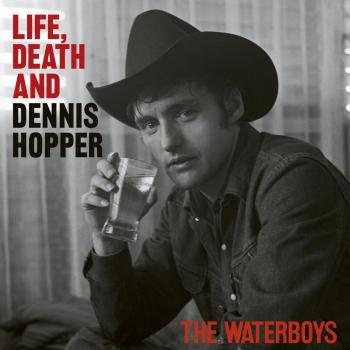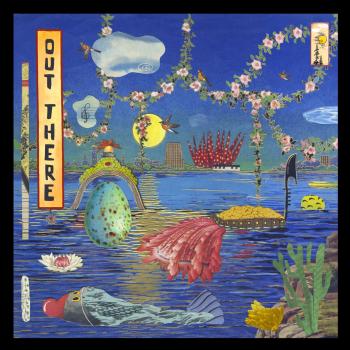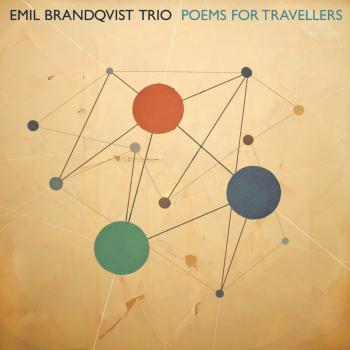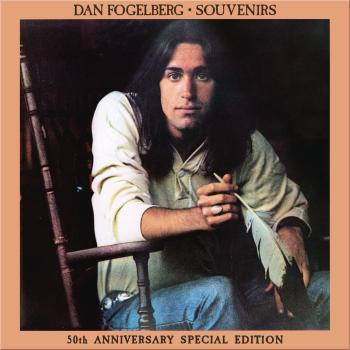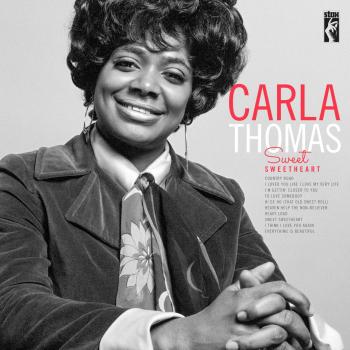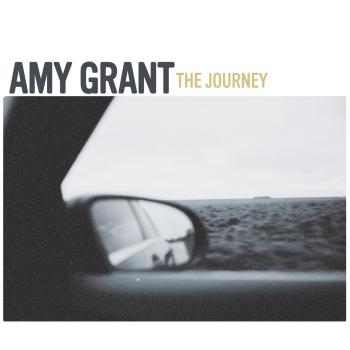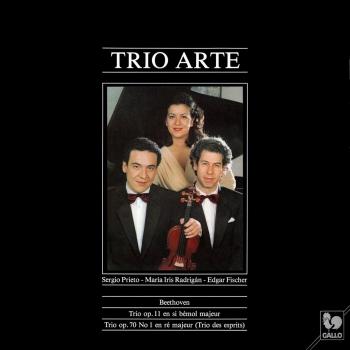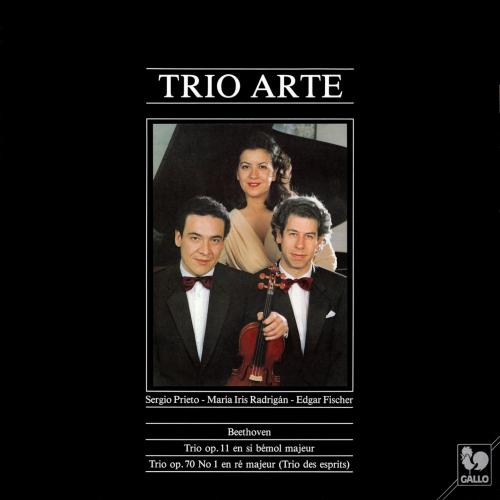
Beethoven: Piano Trio in B-Flat Major, Op. 11 - Piano Trio In D Major, Op. 70, No. 1 (Remastered) Trio Arte
Album info
Album-Release:
1984
HRA-Release:
29.03.2024
Label: VDE-GALLO
Genre: Classical
Subgenre: Chamber Music
Artist: Trio Arte
Composer: Ludwig van Beethoven (1770–1827)
Album including Album cover
- Ludwig van Beethoven (1770 - 1827): Piano Trio No. 4 in B-Flat Major, Op. 11 "Gassenhauer":
- 1 Beethoven: Piano Trio No. 4 in B-Flat Major, Op. 11 "Gassenhauer": I. Allegro con brio 10:03
- 2 Beethoven: Piano Trio No. 4 in B-Flat Major, Op. 11 "Gassenhauer": II. Adagio 04:40
- 3 Beethoven: Piano Trio No. 4 in B-Flat Major, Op. 11 "Gassenhauer": III. Tema con variazioni (Allegro) 07:25
- Piano Trio No. 5 In D Major, Op. 70, No. 1:
- 4 Beethoven: Piano Trio No. 5 In D Major, Op. 70, No. 1: I. Allegro vivace e con brio 07:24
- 5 Beethoven: Piano Trio No. 5 In D Major, Op. 70, No. 1: II. Largo assai ed espressivo 10:12
- 6 Beethoven: Piano Trio No. 5 In D Major, Op. 70, No. 1: III. Presto 08:51
Info for Beethoven: Piano Trio in B-Flat Major, Op. 11 - Piano Trio In D Major, Op. 70, No. 1 (Remastered)
Thirteen years separate Beethoven 's Op. 70 from his initial forays in the genre, the three Op. 1 trios of 1795. In the interval, Beethoven 's only work for piano trio, Op. 11 of 1798, actually began its life as a trio for clarinet, cello and piano. In order to boost sales, however, this light and cheerful work–whose three movements all end with a bit of surprise–was published for either clarinet or violin, the two parts being nearly identical.
The opening Allegro con brio bounds along, propelled by an active piano part that interacts playfully with the strings. A singing cello in its tenor register introduces the lyrical Adagio. When the tune passes to the violin, its companions supply interjections and imitations. The proceedings reach a magically hushed pianissimo in which short cello fragments are answered by gently flowing rivulets in the piano.
The finale, marked Allegretto , is a theme and variations on an immensely popular tune, "Pria ch'io l'impegno", from the 1797 comic opera L'amor marinaro (Love at Sea) by Joseph Weigl (1766-1846), a once famous and now forgotten composer. In the opera, Captain Libeccio, his servant Pasquale and Cisolfautt, a partially deaf music master rescued at sea by the Captain, sing a terzetto in which Cisolfautt (whose name consists of solfege syllables) declares : "Before I take on this magisterial task, I must have a snack." He then warns that, "You will know what I am all about if my stomach raises a high note by a sharp." Beethoven 's nine variations, dramatic in conception, cover a wide range of expression. And he surely intended that you laugh–or at least smile –at the downright comical ending in which, if you listen carefully, you will hear poor Cisolfautt's stomach rumbling.
Piano Trio Op. 70 No. 1, "Ghost"
The weighty central Largo assai ed espressivo , in D minor, unfolds stealthily. A threenote sotto voce unison motif in the strings and an ornamented turn in the piano sustain the entire movement. Extraordinary piano tremolos, now in the bass, now in the treble, now fortissimo, now pianissimo, accompany the relentless forward march of these initial motifs. A fleeting episode in D major offers a glimmer of light. But it is short-lived, and soon the music reaches a terrifying climax. A chromatic scale in the piano that plunges nearly five octaves recalls the unrepenting Don Giovanni 's descent into the flames of hell at the conclusion of Mozart's opera.
This spectral movement is flanked by two earthly appendages in D major. The first, an Allegro vivace e con brio, opens with a fiery unison motto followed immediately by a dolce theme. The desolate pianississimo unisons that end the exposition seem to fore shadow the mood of the Largo. A contrapuntally involved development requires two attempts to launch the recapitulation: only in the second does the movement's motto sound in the tonic. On the other side of the abyss is a Presto finale that some consider too lighthearted after the horror that is the Largo. But what of the comical drunken Porter's scene that immediately follows Macbeth's grizzly midnight murder of King Duncan? In this way, the finale's quirky chromatic scales and its off-kilter folksiness seem to offer just the right measure of dramatic relief.
Trío Arte:
Sergio Prieto, violin
Maria Iris Radrigán, piano
Edgar Fischer, cello
Digitally remastered
Trío Arte
was founded in 1981 at the initiative of Juana Subercaseaux, then director of the Institute of Music of the Pontificia Universidad Católica. The formation of this ensemble included María Iris Radrigán on piano, who arrived in Chile in 1980 after studying in Germany with the idea of forming a trio, motivated by the versatility of this formation. Sergio Prieto, who also returned from studying in Europe and joined the teaching staff of the Instituto de Música, joined on violin. Initially, Arnaldo Fuentes took on the role of cellist, but after three months of work, and with the arrival of Edgar Fischer from Switzerland to establish himself as a teacher at the Institute, what would become known as the definitive Trio Arte was formed. Already as part of the teaching staff of the Instituto de Música UC, Radrigán, Fischer and Prieto perform their first concert in the Sala Arrau of the Teatro Municipal, with excellent results. Their first tour, supported by the Instituto de Música, includes multiple regions of Chile, including educational activities such as master classes. In 1982, the Trio made its first international tour to Brazil and in 1983 and 1984, they embarked on their first tour outside Latin America to Europe and the United States.
During this tour they have the opportunity to record concerts for the BBC in London, Swiss TV, Radio Nacional de España and the Swiss label Gallo, as well as performing live at important venues such as Carnegie Hall (New York) and Wigmore Hall (London), among others. After such performances they received excellent reviews in international newspapers such as the New York Times and the Daily Telegraph, which highlighted their "musical intelligence and artistic sensitivity" and described them as "solid musicians with excellent technique".
Although the strong point of the Trio Arte are the works of European composers from the 18th to the 20th centuries, such as Beethoven, Mozart, Brahms, Schumann and Shostakovich, among others, on various occasions they perform contemporary Latin American works. The ensemble's international and Chilean recognition after years of improvement has attracted the attention of various national composers, who compose works to be performed by the ensemble. Some of the most outstanding compositions include Alejandro Guarello's Trio 1982, whose world premiere is performed during the Trio's tour to the United States, as well as works by Celso Garrido-Lecca, Francesca Ancarolla, Federico Heinlein, among others.
The discipline of Radrigán, Fischer and Prieto was one of the most outstanding qualities of the Trio, who constantly worked to improve both individually and in the musical performance as a whole. The Trio constantly worked to improve, both individually and as a group, and frequently took part in advanced training activities with outstanding international musicians such as the pianist Menahem Pressler, who, according to the members themselves, was a fundamental guide for the development of the ensemble. Also noteworthy was the meeting with the Beaux Arts ensemble during their visit to Chile, who listened to the Trio Arte and highlighted them as one of the most important chamber music trios of that time.
TranslatedDuring the nineties, with Sergio Prieto's assignment as concertmaster of the Orquesta Sinfónica de Valles de Barcelona, a situation that made it impossible for the violinist to participate actively in the Trio's concerts, a new generation of violinists linked to the Instituto de Música de la Pontificia Universidad Católica had the opportunity to participate sporadically as part of the ensemble, among them Alonso Fernández and Rubén Sierra.
With Prieto's return to Chile, the Trio Arte can continue its activities, although less frequently than before. Also, Radrigán and Fischer devoted themselves in parallel to the Fischer-Radrigán Duo and to teaching at the Catholic University, which, added to Prieto's musical and teaching activity, made time for trio work scarce. Gradually, the activities of the ensemble became more and more spaced out over time, until 2009, when they ceased their activities completely.
The legacy of the Trio Arte is not restricted to its numerous concerts and recordings, but also includes its pedagogical work, not only as part of the teaching staff of the Institute of Music of the Pontificia Universidad Católica, but also in numerous master classes and courses given in Switzerland, Spain, Peru and many regions of Chile, the teaching aspect being perhaps one of its most relevant legacies.
This album contains no booklet.


